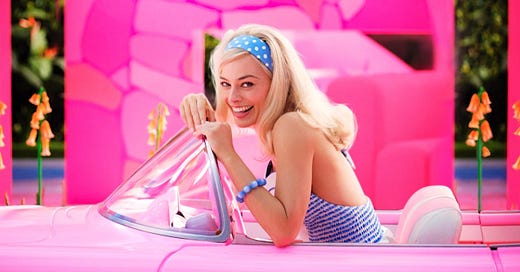Gentle reader,
I think that summer’s onslaught of all things Barbie must point to something deep in our collective psyche.
Barbie is an avatar for big feelings about femininity, the ways femininity is packaged, bought, and sold, and the ways femininity is despised, reclaimed, adored, and renegotiated.
Last weekend, I saw the Barbie movie (directed by Gret…
Keep reading with a 7-day free trial
Subscribe to Church Blogmatics by Beth Felker Jones to keep reading this post and get 7 days of free access to the full post archives.





